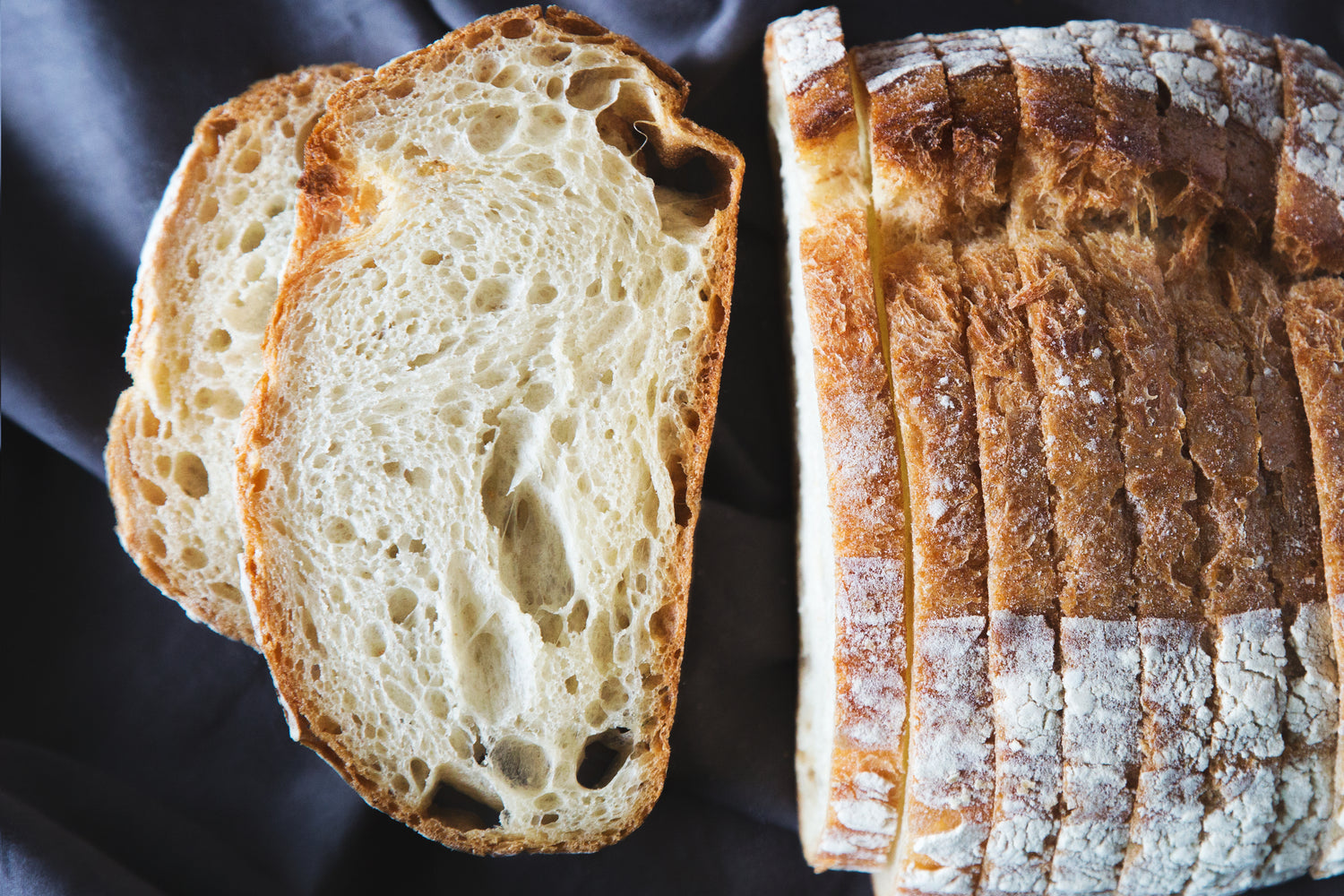Sourdough Guide
Discover the world of sourdough on our Sourdough Information Page! Explore the rich history of sourdough, from its origins in ancient civilizations to its role in modern kitchens. Learn about the health benefits of naturally fermented bread, our commitment to organic ingredients, and the artistry behind each loaf. Whether you're curious about the baking process or how sourdough supports gut health, this page is your guide to everything sourdough.
WHAT IS SOURDOUGH
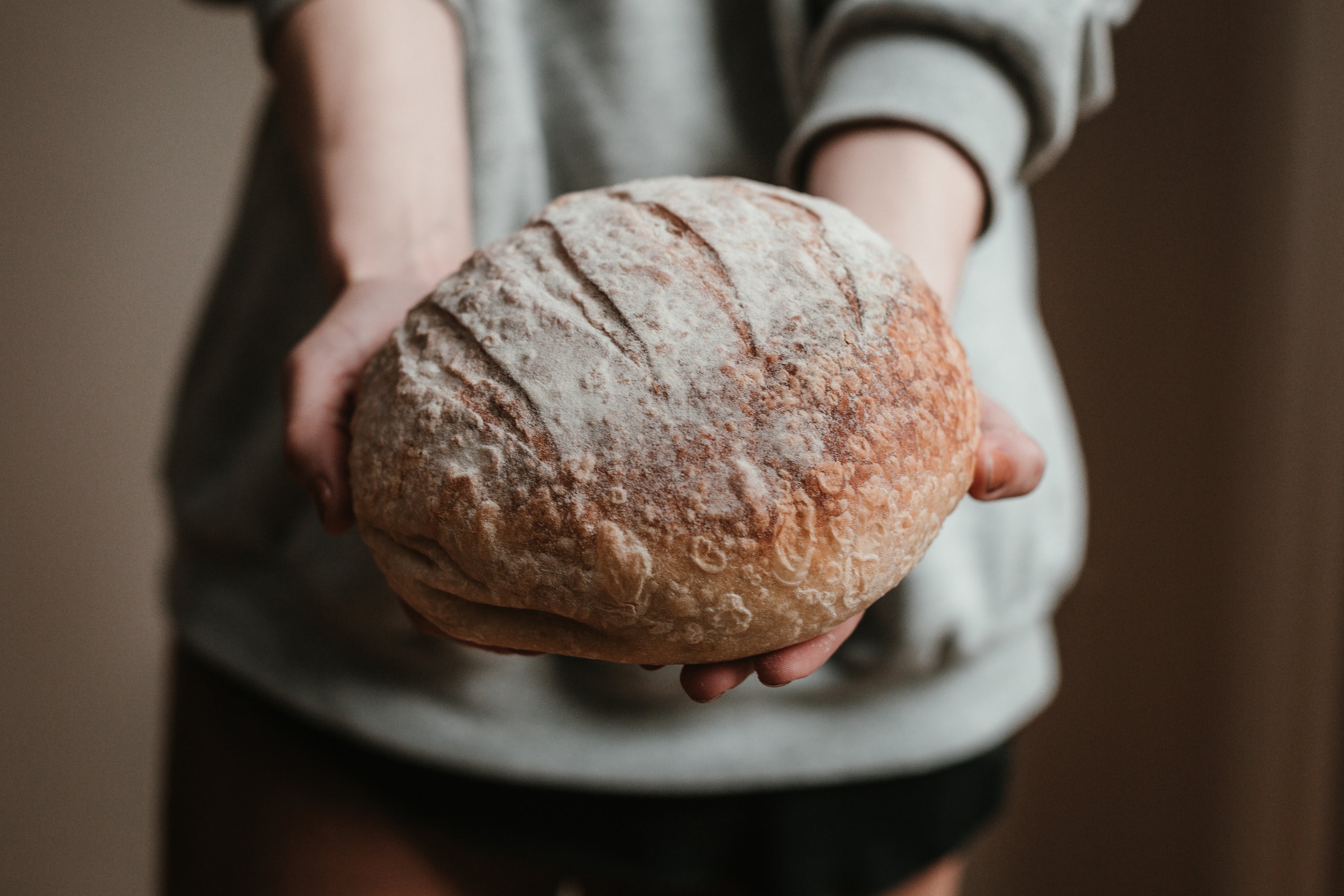
Sourdough Throughout History
Ancient BeginningsSourdough bread is one of the oldest forms of leavened bread, with its origins tracing back to ancient civilizations. The first evidence of sourdough dates back to around 4,000 BCE in Egypt. It is believed that the Egyptians discovered fermentation by accident when wild yeasts and bacteria from the environment settled in their bread dough, causing it to rise and develop a tangy flavor. This serendipitous discovery marked the beginning of bread leavening, revolutionizing bread-making practices.
Sourdough in the Ancient World
The use of sourdough spread from Egypt to other parts of the ancient world. The Greeks and Romans adopted and refined sourdough techniques, incorporating them into their own bread-making traditions. The Romans, in particular, were known for their baking innovations and established the first professional bakeries, where sourdough was a staple product. The Roman army also relied on sourdough bread as a durable and nutritious food source during their extensive campaigns.
Middle Ages and Renaissance
During the Middle Ages, sourdough remained a fundamental food source in Europe. Bakeries began to proliferate in towns and cities, and each region developed its own unique sourdough cultures. In some areas, sourdough was made with rye flour due to the prevalence of rye as a crop, particularly in Northern and Eastern Europe. This period also saw the introduction of the first bread guilds, which regulated baking standards and practices.The Renaissance brought advancements in culinary techniques and the dissemination of baking knowledge through books and manuals. Sourdough continued to be a popular choice, valued for its flavor, texture, and longer shelf life compared to other types of bread.
Sourdough in the New World
European settlers brought their sourdough cultures to the New World in the 17th and 18th centuries. Sourdough became especially important during the California Gold Rush of 1848-1855. Prospectors, known as "sourdoughs," relied on sourdough bread as a primary food source. The term "sourdough" even became a nickname for these hardy individuals. San Francisco, in particular, developed a reputation for its distinctive sourdough bread, made famous by the unique wild yeasts and bacteria in the local environment.
20th Century Decline and Revival
With the advent of commercial yeast in the late 19th and early 20th centuries, sourdough baking declined. Commercial yeast offered a faster and more predictable rise, which was advantageous for large-scale baking operations. However, traditional sourdough bread maintained a loyal following among artisan bakers and enthusiasts.The late 20th and early 21st centuries saw a resurgence of interest in sourdough, driven by a growing appreciation for traditional food practices, artisanal craftsmanship, and the health benefits associated with natural fermentation. Sourdough baking became a symbol of the slow food movement, emphasizing quality, sustainability, and connection to food heritage.
Sourdough Today
Today, sourdough bread enjoys widespread popularity across the globe. Modern sourdough baking combines traditional techniques with contemporary innovations. At the Leavened Box, our bakers experiment with various flours, hydration levels, and fermentation times to create unique flavor profiles and textures. Our sourdough bread is celebrated not only for its taste and nutritional benefits but also for its deep historical roots and cultural significance.The history of sourdough bread is a testament to human ingenuity and the enduring appeal of fermented foods. From its ancient origins to its modern-day revival, sourdough has remained a beloved staple, connecting us to our culinary past while inspiring future generations of bakers. The Leavened Box is proud to be a part of continuing Sourdough's long and rich history.
TOP 10 REASONS TO EAT SOURDOUGH
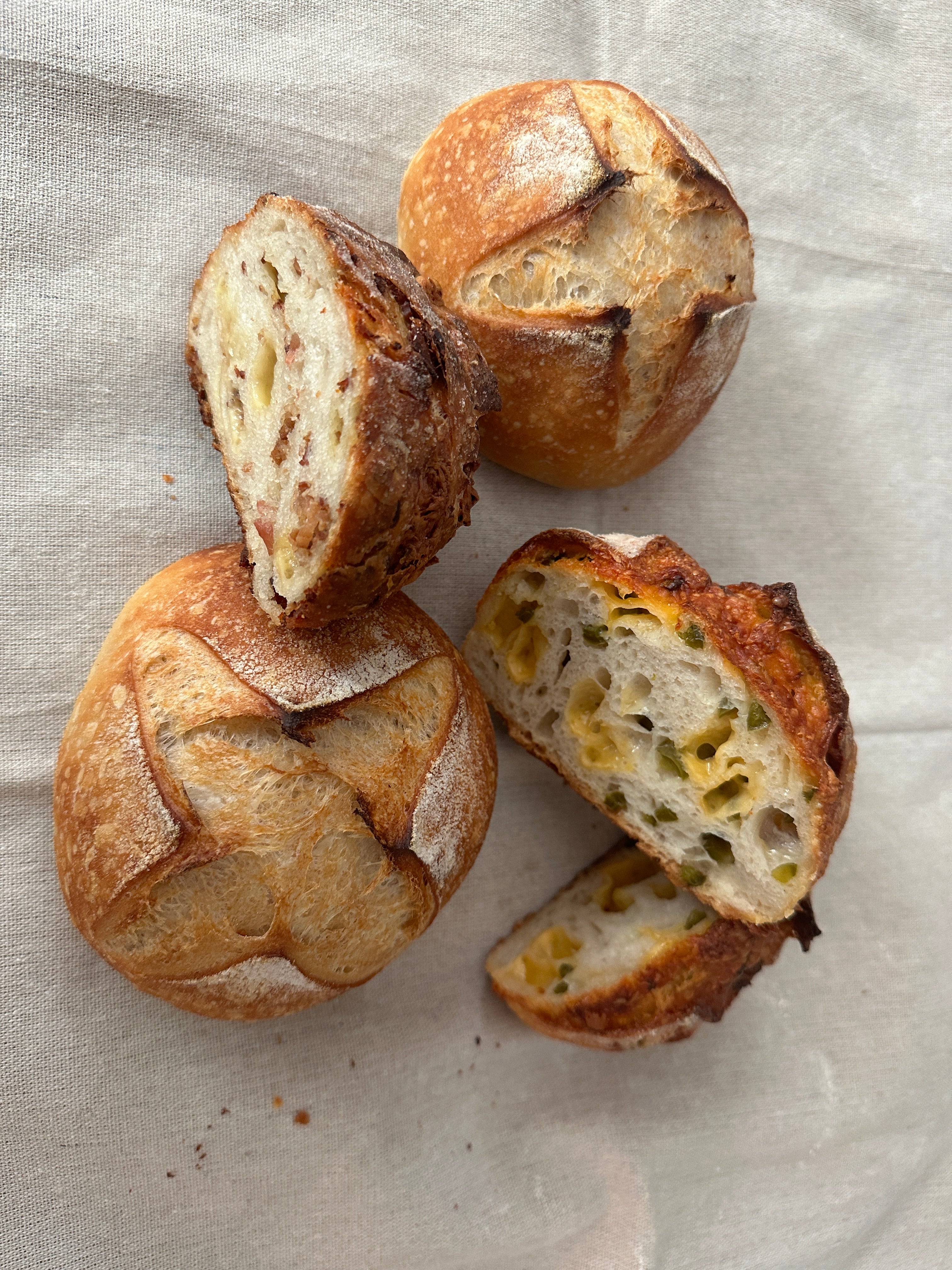
Top 10 Reasons to Eat Sourdough
1.Better Digestibility
- Sourdough’s long fermentation process breaks down gluten and other proteins, making it easier to digest compared to other breads.
2. Nutrient-Rich
- The fermentation process enhances the bioavailability of vitamins and minerals such as B vitamins, iron, magnesium, and zinc.
3. Low Glycemic Index
- Sourdough has a lower glycemic index than regular bread, which means it releases sugars slowly into the bloodstream, helping to maintain stable blood sugar levels.
4.Gut Health Benefits
- The natural fermentation process in sourdough promotes the growth of beneficial bacteria in the gut, aiding in better digestion and overall gut health.
5.Delicious Flavor and Texture
- Sourdough’s unique tangy flavor and chewy texture make it a favorite among bread enthusiasts, adding a gourmet touch to any meal.
6. Preservative-Free
- Traditional sourdough bread is often made without preservatives, relying on natural fermentation to maintain freshness, making it a healthier choice.
7. Rich in Antioxidants
- The fermentation process in sourdough increases the levels of antioxidants, which help to fight free radicals in the body and reduce inflammation.
8. Improved Mineral Absorption
- Sourdough fermentation reduces phytic acid levels, which can inhibit the absorption of essential minerals, thus allowing your body to better absorb nutrients from the bread.
9. Supports Weight Management
- The combination of lower glycemic index and higher fiber content in sourdough can help you feel fuller for longer, aiding in weight management.
10. Versatile Culinary Uses
- Sourdough is incredibly versatile, suitable for a variety of dishes from sandwiches and toast to gourmet recipes, enhancing the flavor and nutritional value of your meals.
Incorporating sourdough into your diet can provide these benefits while offering a delicious and satisfying eating experience.
HOW TO STORE AND REFRESH YOUR SOURDOUGH
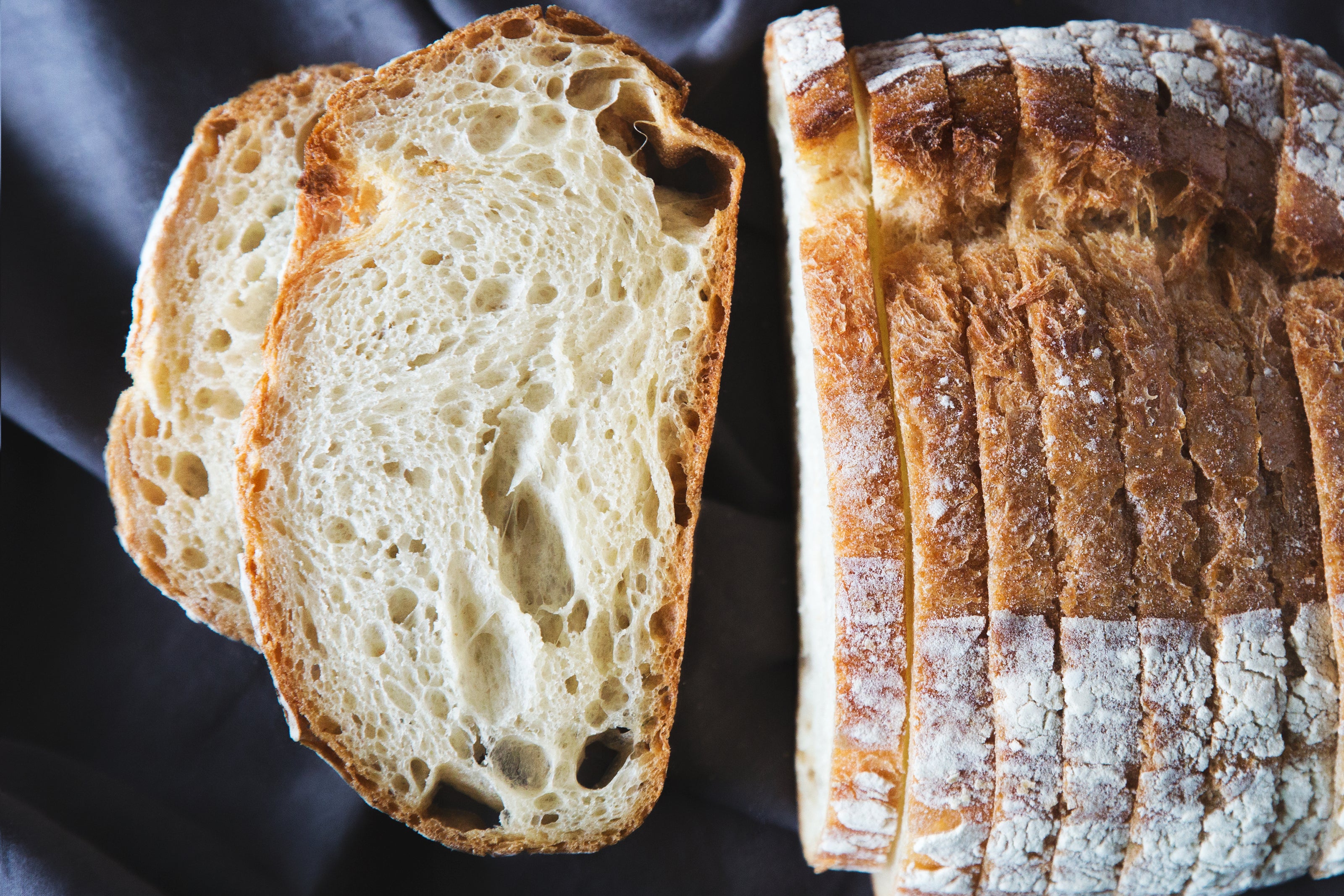
REFRESH FROZEN SOURDOUGH BREAD
At The Leavened Box, our bread is specially packaged after baking to preserve its freshness. It is frozen to lock in its flavor and texture, but it requires a simple revival process when you're ready to enjoy it. Follow these easy steps to bring your bread back to life:
- Defrost the Bread: Place the frozen, wrapped bread on your counter to defrost.
- Preheat the Oven: Set your oven to 375 degrees Fahrenheit.
- Moisten the Bread: Once completely defrosted, uncover the bread and run it under the faucet for approximately 5 seconds.
- Bake the Bread: Place the whole loaf directly on the oven rack. Bake for 15-20 minutes, or until the crust is crispy.
- Cool the Bread: Let the bread cool on the counter for about 15 minutes.
- Enjoy: Slice and enjoy your refreshed sourdough bread!
Perfect for savoring that freshly baked taste anytime!
REVIVING SOURDOUGH BREAD
While the fermentation process gives sourdough a longer shelf life than regular bread, it can still go stale after about 4 days. If your bread is starting to feel a little stale, follow these steps to revive it:
- Moisten the Crust: Run the crust end of the bread under the faucet briefly.
- Preheat the Oven: Set your oven to 375 degrees Fahrenheit.
- Prepare for Baking: Place the bread, crumb side down, on a parchment paper-lined cookie sheet.
- Bake the Bread: Bake for about 15 minutes.
- Enjoy: Your bread will come out tasting like it's freshly baked!
It's a simple way to bring your sourdough back to life and enjoy that fresh-baked taste!
HOW TO STORE SOURDOUGH BREAD
The best way to store your sourdough bread is to keep it in an enclosed paper bag or in a bread box of your choosing. This will help preserve its crustiness and keep it fresh for longer. Enjoy your sourdough at its best by following this simple storage tip!
SHOULD I STORE MY SOURDOUGH BREAD IN THE REFRIDGERATOR?
No! Storing sourdough bread in the refrigerator dries it out and will cause it to go stale much faster than leaving it on the counter. For the best taste and texture, keep your sourdough in an enclosed paper bag or a bread box at room temperature.
HOW LONG WILL MY SOURDOUGH STAY FRESH IN THE FREEZER?
Another benefit of freezing your sourdough is that it will stay fresh in the freezer for up to 8 months. For easy portioning and reheating, you can also slice your sourdough bread and place the slices in a sealed plastic bag. This way, you can enjoy a fresh-tasting slice anytime!
HOW LONG WILL MY SOURDOUGH STAY FRESH ON THE COUNTER?
Sourdough bread stays fresh on the counter for about 3–5 days when stored properly. To maintain its crust and texture, keep it in a paper bag or wrap it in a clean tea towel. Avoid plastic, as it can trap moisture and make the crust soggy. For longer freshness, slice and freeze any extra bread within a couple of days.
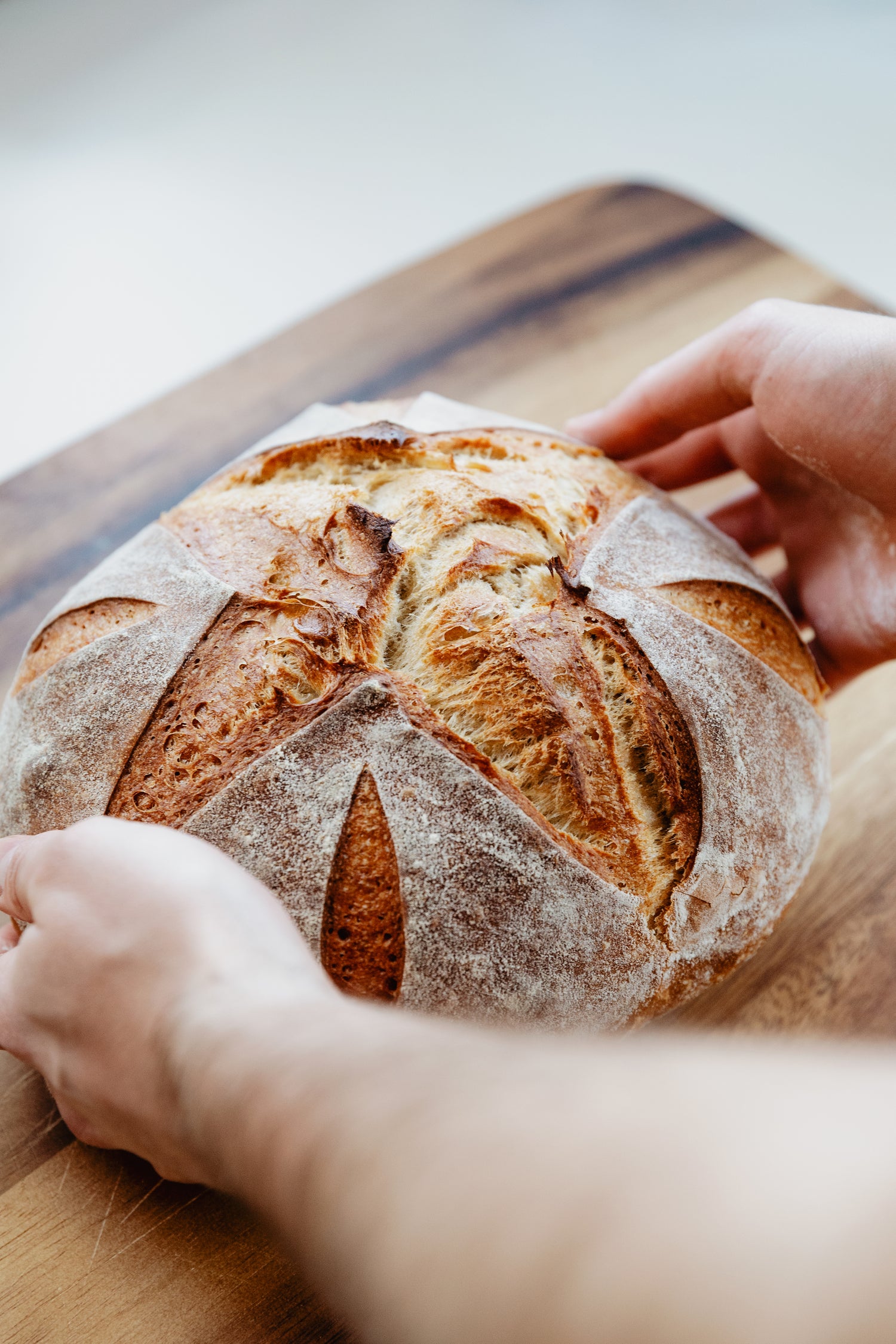
How do You Refresh Your Sourdough?
